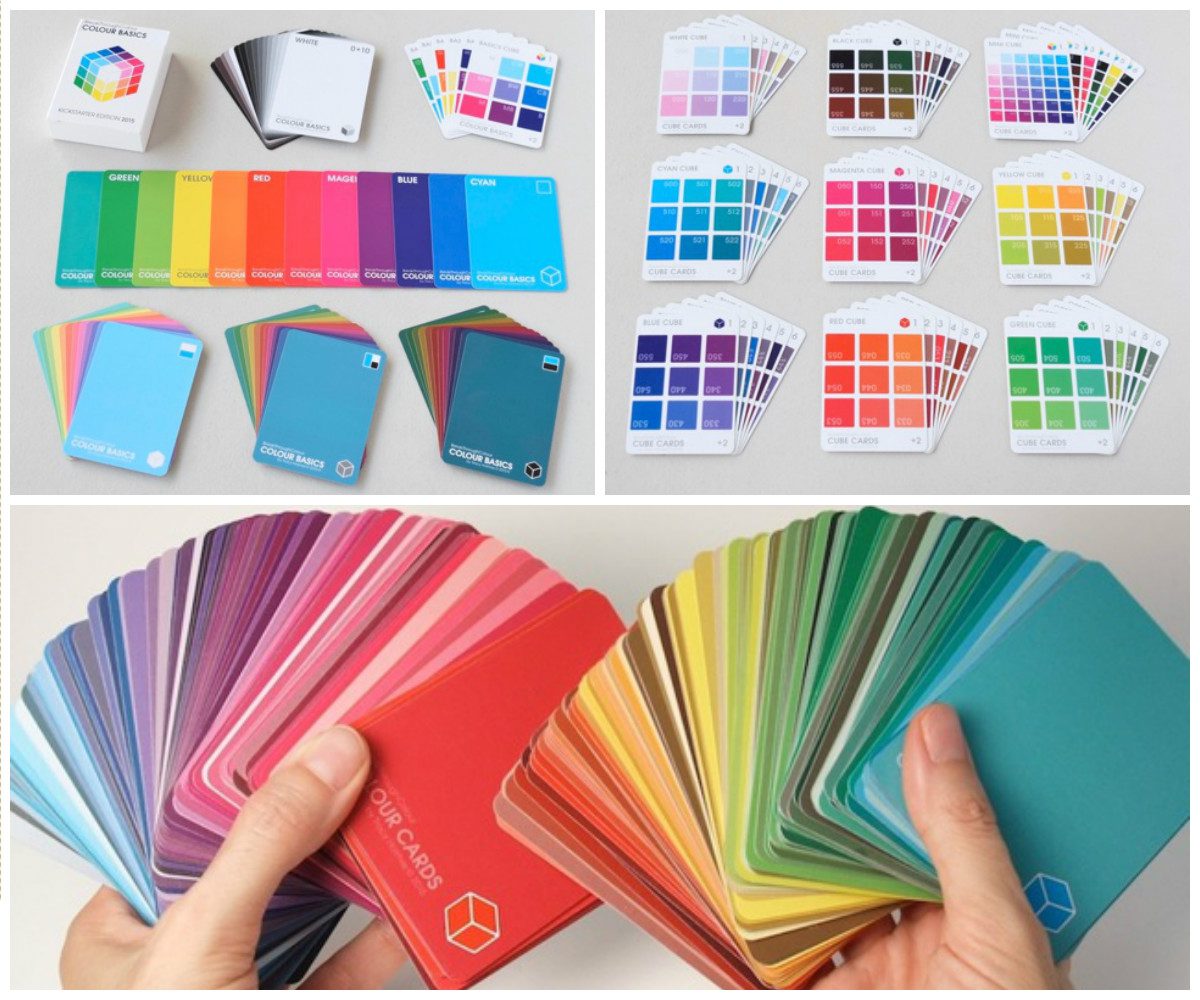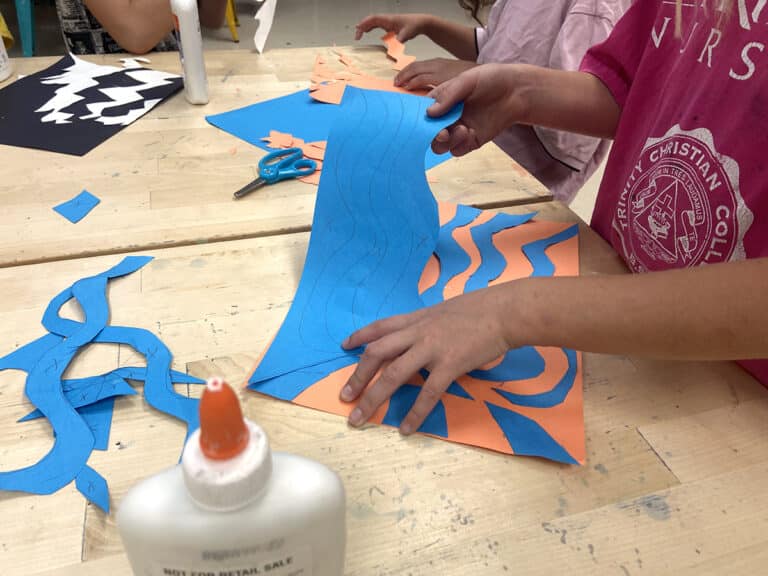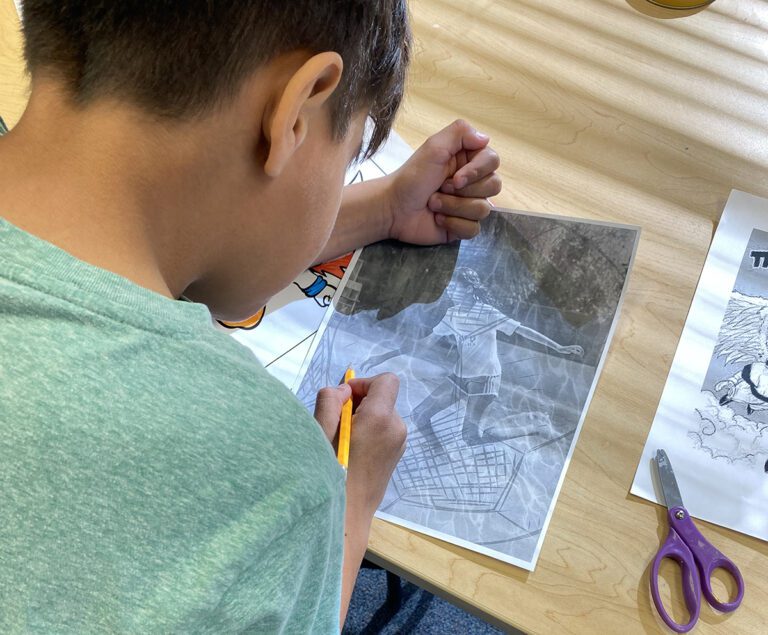By the time students get to high school, they either know the basics of color theory already or they move through the information pretty quickly. For this reason, I’m a huge advocate of getting rid of your color wheel lesson.
There are so many more resources out there that give kids the same exposure. It’s time to move on to more advanced ideas.
Whether you are looking at things digitally, listening to podcasts, reading articles, or working with color cards, there are some fascinating activities and information awaiting your kids.
Here are 5 of my favorite resources:
1. Color Matching Game
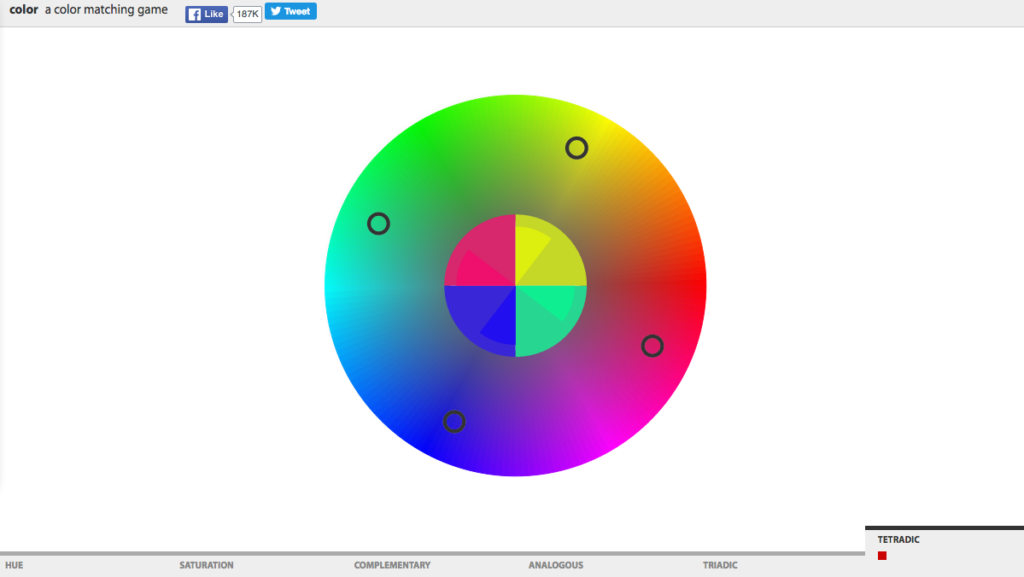
This is a really addictive, online color theory game that asks you to find hues, intensities, and color combinations throughout the color spectrum. The brief amount of time you are given to complete the activities adds excitement, and the score at the end gamifies the process. Try it out yourself first, then see if your students can beat your score!
2. Hue Acuity Test
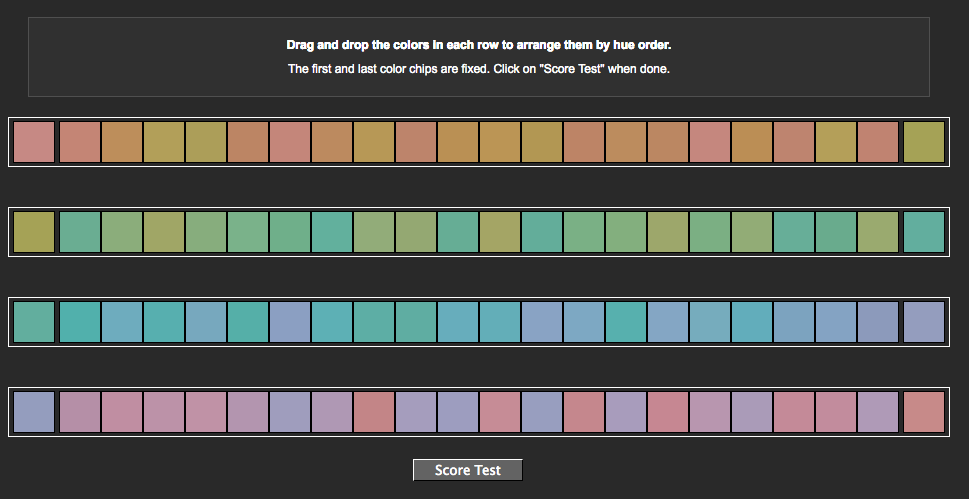
After students have mastered the color matching game, it’s time for the Hue Acuity Test. This isn’t timed, which is a good thing–you can spend quite a while dragging and dropping the different hues to get them in just the right order. It’s definitely a challenge, and it’s a great tool to show the wide array of subtleties and differences that can exist within a single hue.
3. Blendoku
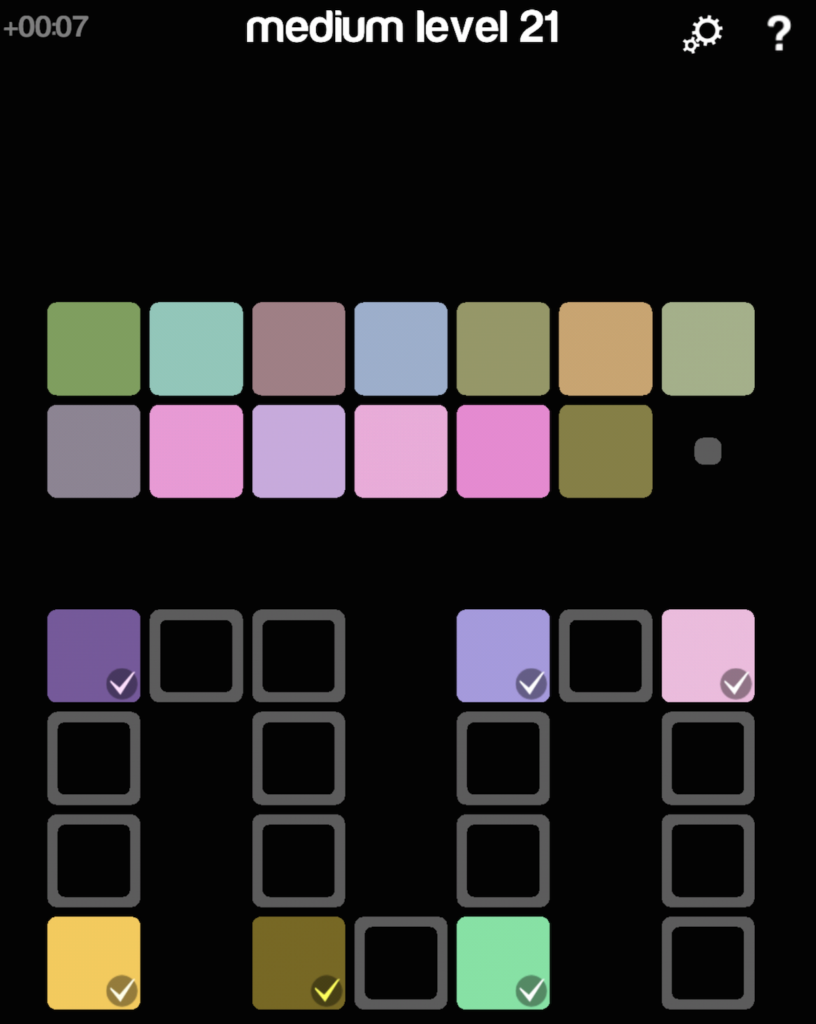
If your students are really fascinated by this game, have them take a look at the Blendoku app for your phone or device. It’s a great game for training your brain to see color flows. You make connections between hues, sorting them into all kinds of different columns. It begins simply, but as you progress, the color changes become extremely subtle and the grids become more complex. Blendoku 2 was just recently released as well and is worth your time.
4. BreakThroughColour Cards
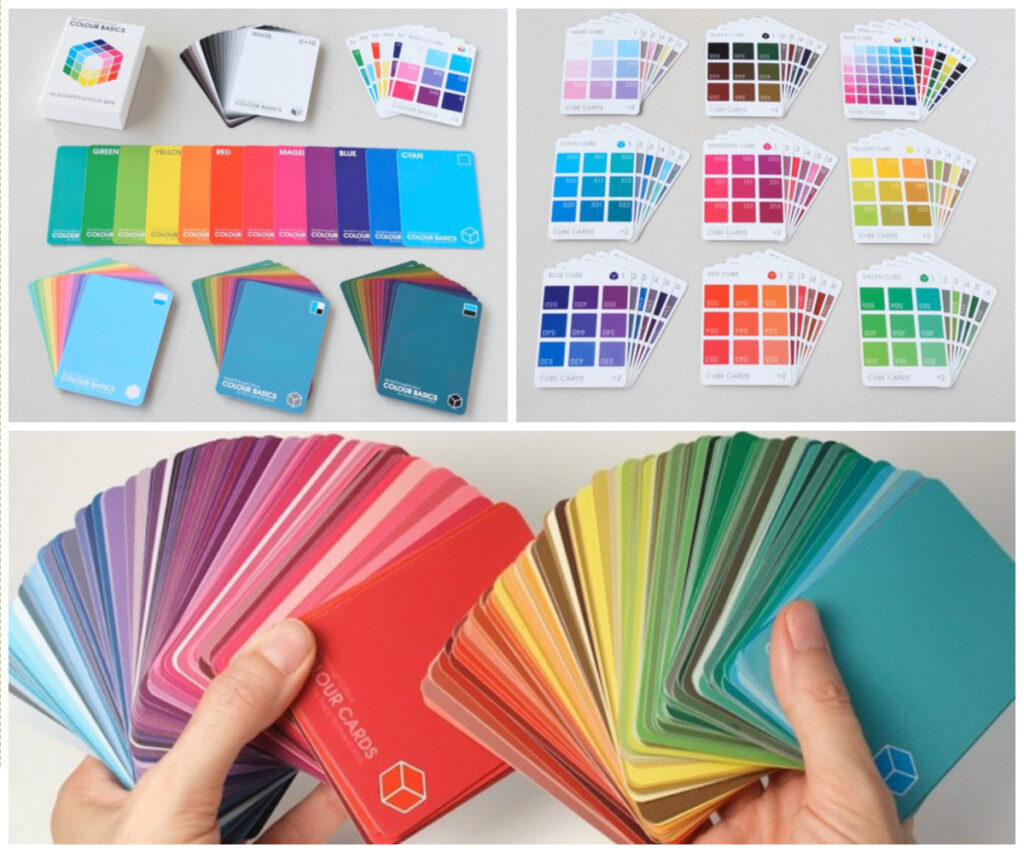
I just got my hands on a couple sets of these cards, and let me tell you something. They. Are. Amazing. They can work really well for teaching the basics–organizing colors by family, matching hue to value, and playing with color schemes. More importantly, though, they do an incredible job of teaching advanced color theory.
In fact, if you’re a fan of Blendoku, BreakThroughColour is kind of like an analog version, as you can manipulate the deck of cards in much the same way. Try and create a color flow or mix the cards up and see if you can get them back in sequence!
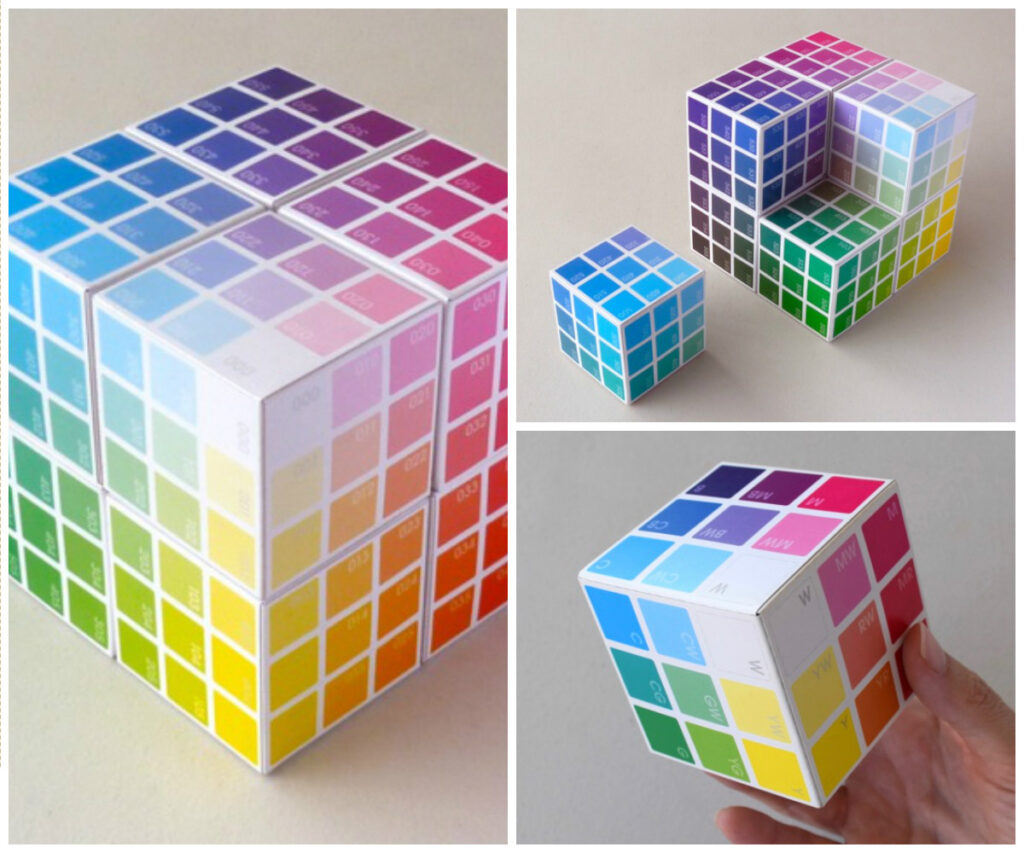
The color cube you can create asks you to look at color in three dimensions, organized by hue, value, and intensity. It’s different from the way we traditionally think about color theory, but it is a more thorough and intuitive way of dealing with color.
Information on the back of each card shows how colors are mixed, how to reach the intensity, and where the value falls on a scale of 1 to 100. There is an in-depth web site with all kinds of color activities and some very informative directions about how color works.

The activities are great to take back to your classroom and illustrate all of the ideas about color theory you have been trying to pass along to your students. Although these cards are probably best suited for the high school level, don’t let that stop you from trying them out with small groups of younger students. If you are there to guide them one-on-one, they can definitely master the basics!
It’s an exciting time for BreakThroughColour as many more resources are in development for teachers. If you’d like to keep up with all the latest developments, you can sign up for the newsletter here or get in touch with Tracy, the creator, here. And, if you’re interested in getting your hands on the cards, you can see all of your options right here!
5. Podcasts
If any or all of these things have engaged your students, they might enjoy listening to a podcast on color. The most entertaining is definitely the episode on color from Radiolab. The ever-popular Stuff You Should Know podcast is informative as well. As a teacher, you’ll definitely want to check out Art Ed Radio’s color theory episode featuring Andrea Slusarski. Each of these is a great source of information on color theory, the science behind color, and why it is so fascinating.
There are so many incredible tools for teaching color. With the plethora of resources available, you can be sure to find something to engage and interest your students. At the very least, you can quit teaching that tired color wheel lesson and move on to something better.
If you’re looking for even more amazing resources for color theory, be sure to sign up for the Summer 2016 Art Ed Now Online Conference where Andrea Slusarski will share how you can engage your students by merging color and science. You’ll walk away with tons of new knowledge to amaze your students!
Have you tried any of these activities with your students?
What are your other favorite resources for teaching color theory?
Magazine articles and podcasts are opinions of professional education contributors and do not necessarily represent the position of the Art of Education University (AOEU) or its academic offerings. Contributors use terms in the way they are most often talked about in the scope of their educational experiences.
